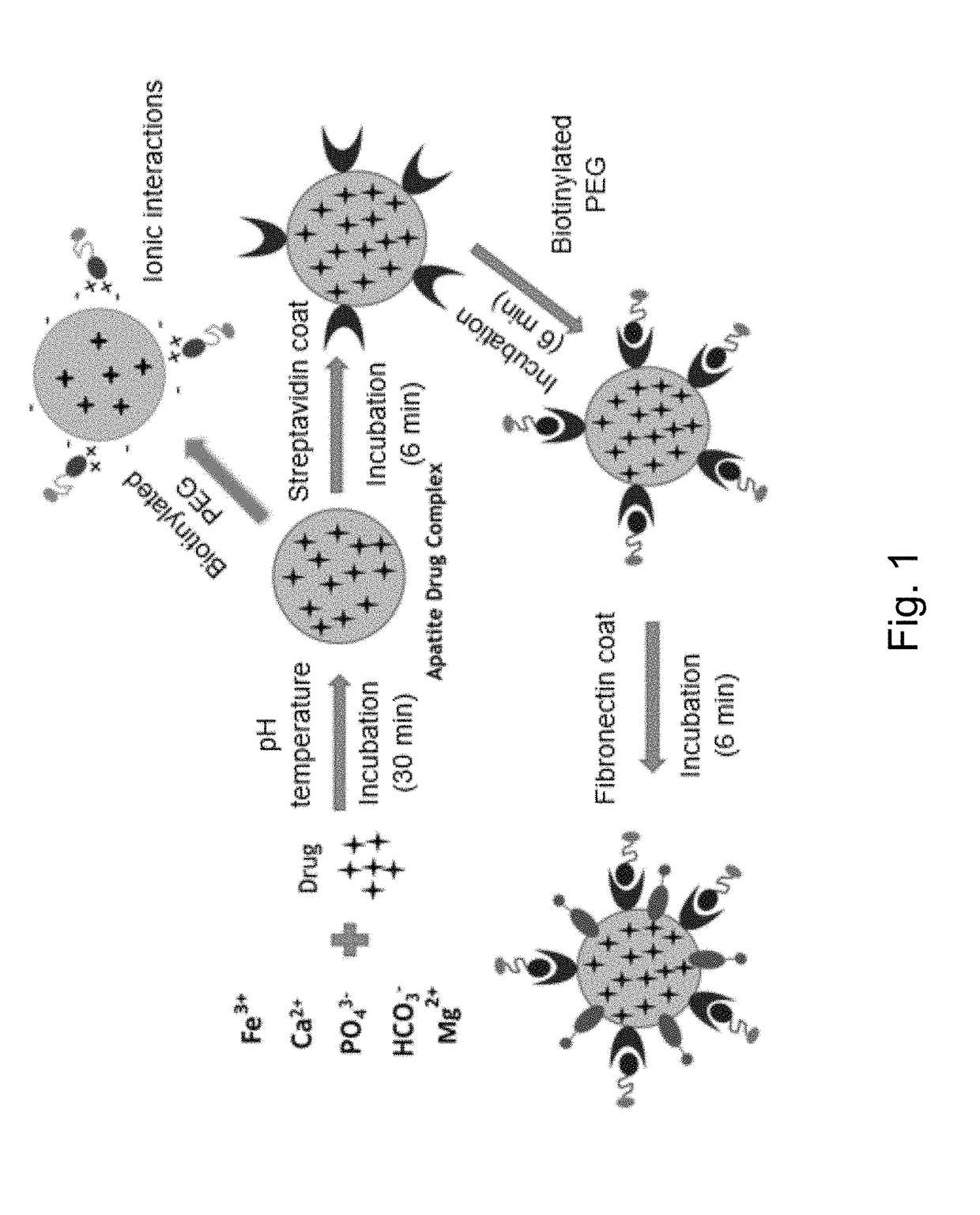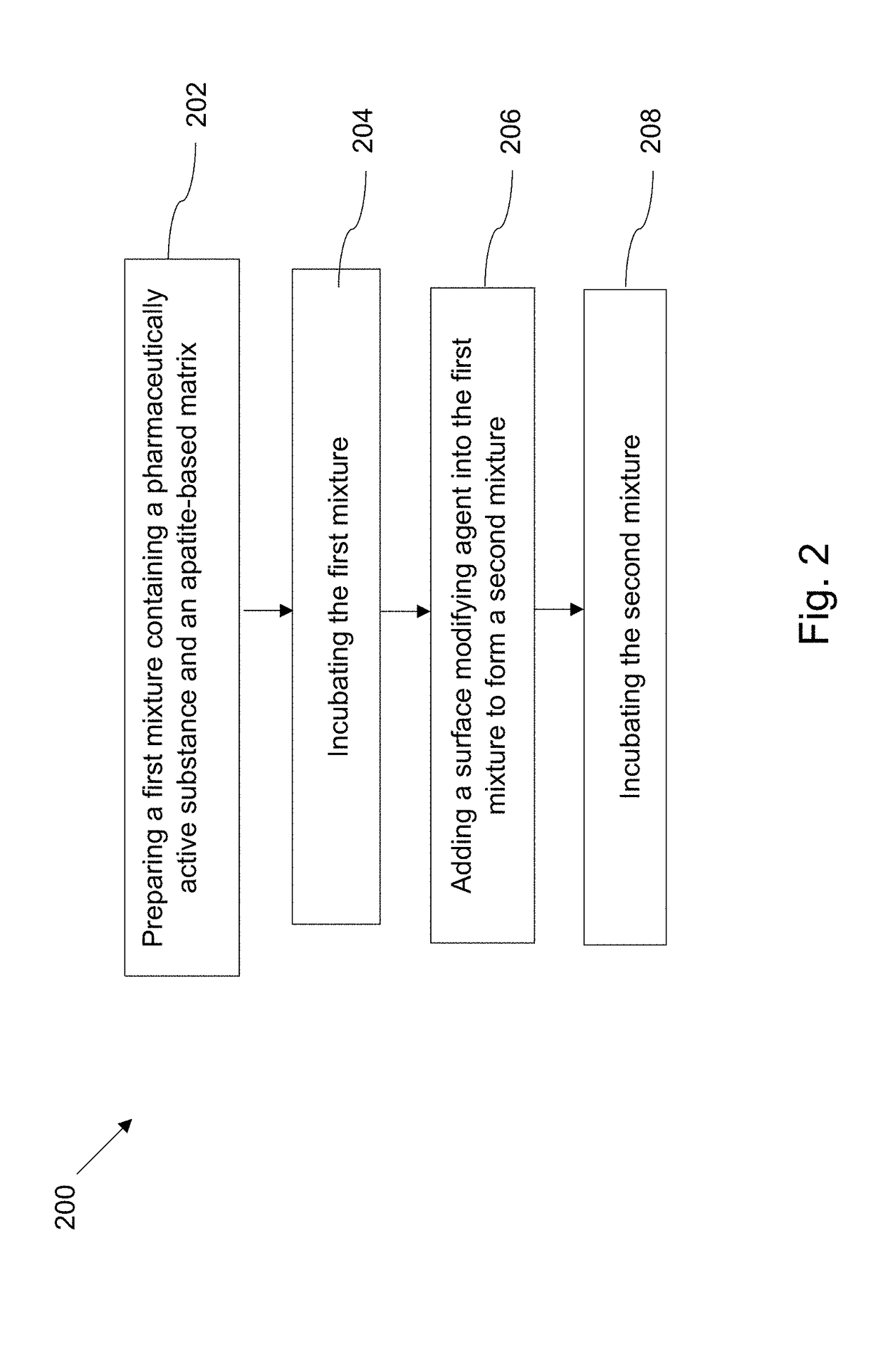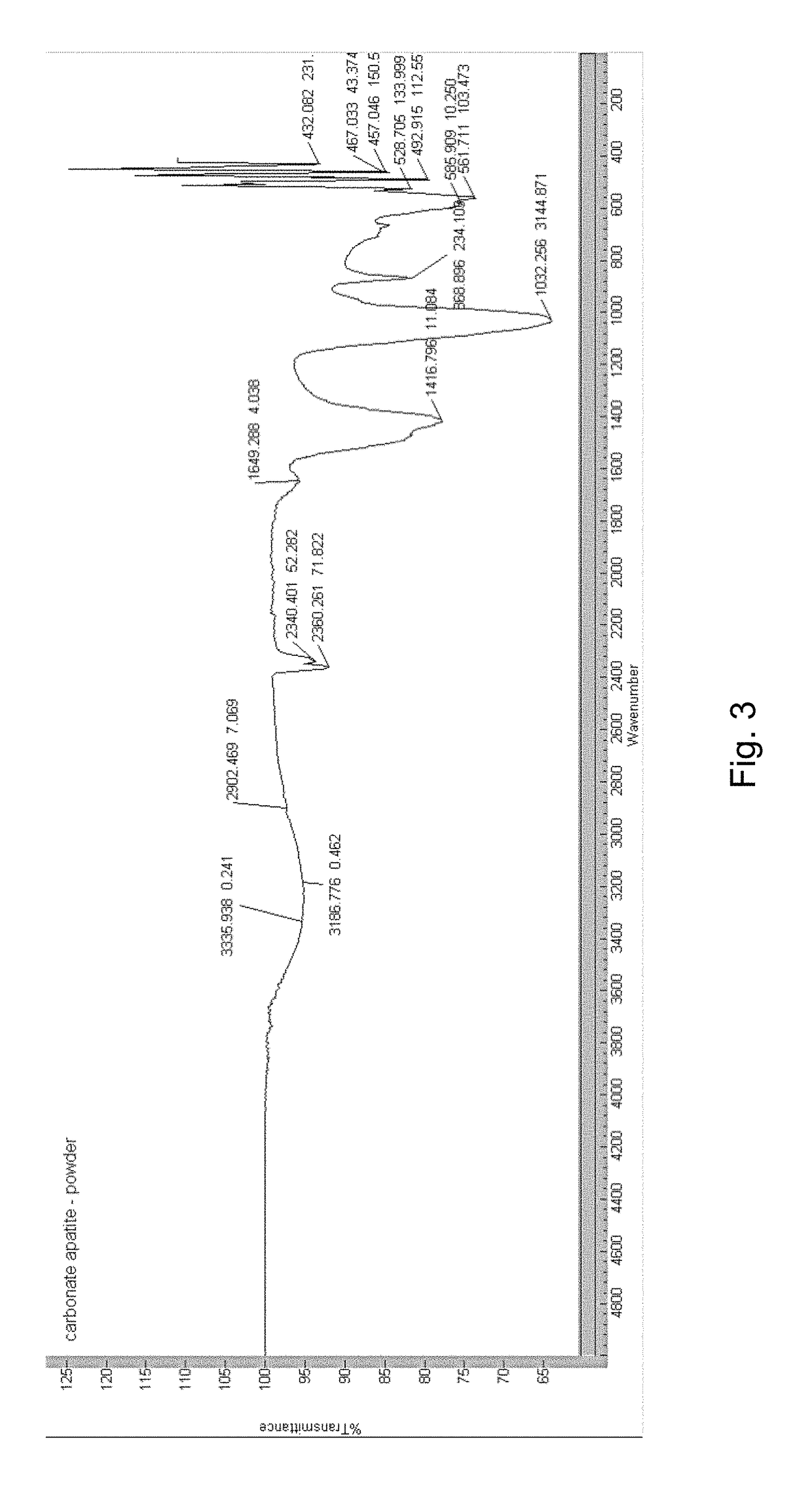Pharmaceutical composition and a method for producing thereof
a technology of pharmaceutical composition and composition, applied in the field of medical treatment, can solve the problems of drug degradation and loss, limited practical use in clinical practice, and low drug bioavailability, so as to facilitate the uptake of drugs, improve drug accumulation, and facilitate the effect of drug accumulation
- Summary
- Abstract
- Description
- Claims
- Application Information
AI Technical Summary
Benefits of technology
Problems solved by technology
Method used
Image
Examples
example 1
[0097]Production of Apatite-Based Matrix
[0098](5) Preparation of Apatite-Based Matrix
[0099]Apatite-based matrix was formulated by adding an aqueous solution containing 6 mM calcium salt to a bicarbonate-buffered cell culture medium (Dulbecco's Modified Eagle Medium) containing 44 mM sodium bicarbonate, 0.9 mM inorganic phosphate, 2.5 mM ferric or ferrous salt, 0.8 mM magnesium salt, 110 mM sodium chloride (NaCl) and 25 mM glucose (pH 6 to 8). The mixture was then incubated at 37° C. for 30 minutes, resulting in formation of microscopically visible particles.
[0100]Generation of the apatite-based matrix in cell culture medium containing the above components along with amino acids and vitamins, indicates the possible adsorption of the amino acids and vitamins on the matrix surface.
[0101](6) Characterization of Apatite-Based Matrix
[0102]The formation of apatite-based matrix was confirmed via chemical analysis, infrared spectroscopy, X-ray diffraction pattern (XRD) and X-ray fluorescence...
example 2
Ions Substitution in Production of Apatite-Based Matrix
[0125](6) Fe2+ / Fe3+ and Mg2+
[0126]Role of Fe3+ and Mg2+ in production of apatite-based matrix was tested by increasing the amount of each of the two salts in the apatite-based matrix preparation while reducing the total amount of Ca2+.
[0127]Apatite-based matrix formulated with 44 mM sodium bicarbonate, 2 mM calcium salt, 2.65 mM ferric salt, 0.9 mM inorganic phosphate, 1.8 mM magnesium salt, 110 mM sodium chloride (NaCl) and 25 mM glucose were allowed to interact with luciferase plasmid. Then, MCF-7 and 4T1 cells were transfected with the luciferase plasmid-carrying apatite-based matrix, followed by observation and measurement on fluorescence (luciferase expression level) after transfection of MCF-7 and 4T1 cells. The luciferase expression level was measured in relative light units (RLU) per mg of protein. The amount of each salt (Fe2+ / Fe3+ and Mg2+) was manipulated while reducing total amount of Ca2+.
[0128]As shown in FIGS. 11(...
example 3
Surface Modification in Pharmaceutical Composition Production
[0136](5) Bio-Distribution of Pharmaceutical Composition
[0137]Bio-distribution of pharmaceutical composition comprising apatite-based matrix incorporated with AllStars Negative AF 488 siRNA with involvement of fibronectin and transferrin coating on various organs was examined by using the procedure below.
[0138]4T1 tumour-induced BALB / c mice were treated intravenously through tail-vein injection by administering 100 μL of pharmaceutical composition comprising surface-coated apatite-based matrix formed with incorporation of 1 μM siRNA when the tumour volume reached approximately 13.20±2.51 mm3. Mice were sacrificed for 1, 2 or 4 hours post treatment, followed by organs harvesting and lysis. Tissue lysates were centrifuged at 15,000 rpm for 30 minutes at 4° C. and 100 μL supernatants were taken for observation of fluorescence activity available in each organs by measuring fluorescence activity per 500 mg of tissue mass.
[0139]...
PUM
| Property | Measurement | Unit |
|---|---|---|
| Molar density | aaaaa | aaaaa |
| Molar density | aaaaa | aaaaa |
| Molar density | aaaaa | aaaaa |
Abstract
Description
Claims
Application Information
 Login to View More
Login to View More - R&D
- Intellectual Property
- Life Sciences
- Materials
- Tech Scout
- Unparalleled Data Quality
- Higher Quality Content
- 60% Fewer Hallucinations
Browse by: Latest US Patents, China's latest patents, Technical Efficacy Thesaurus, Application Domain, Technology Topic, Popular Technical Reports.
© 2025 PatSnap. All rights reserved.Legal|Privacy policy|Modern Slavery Act Transparency Statement|Sitemap|About US| Contact US: help@patsnap.com



